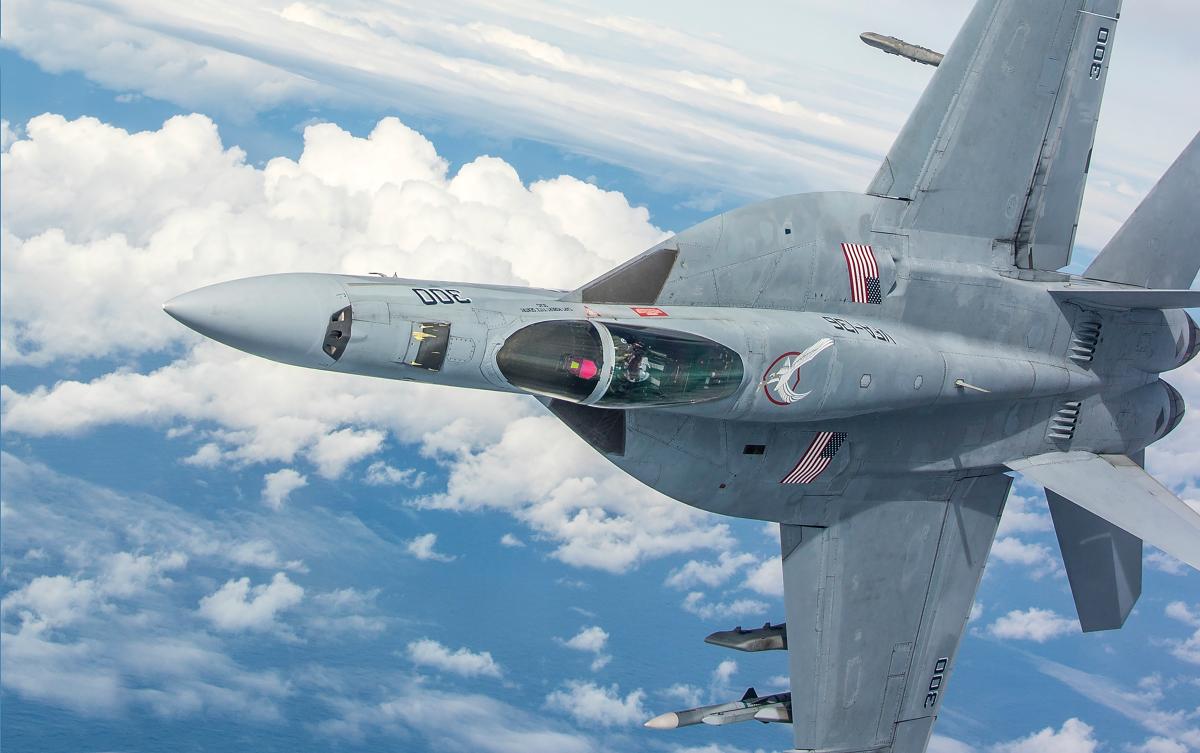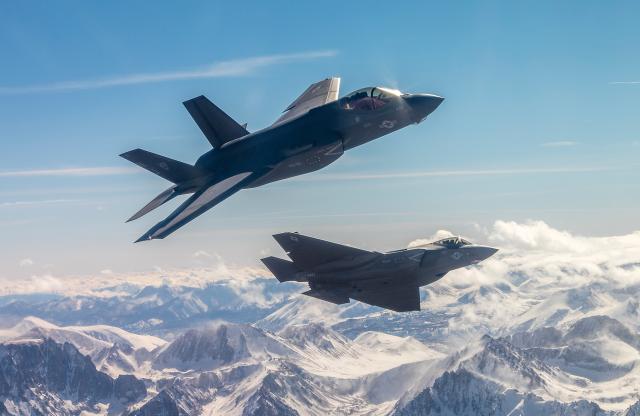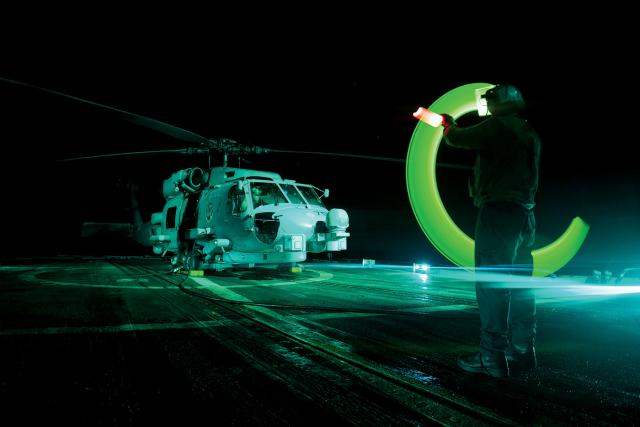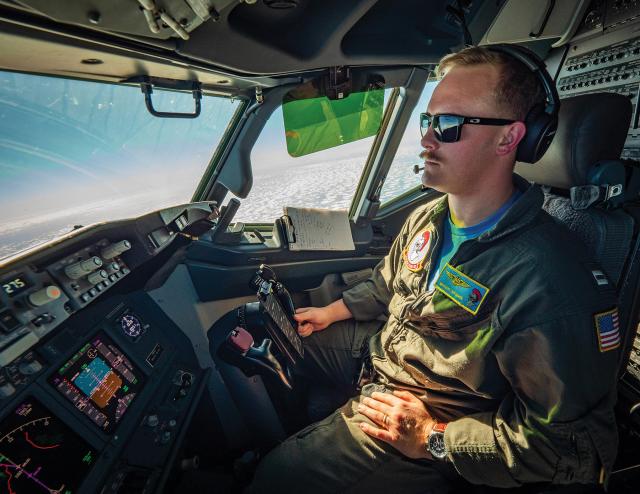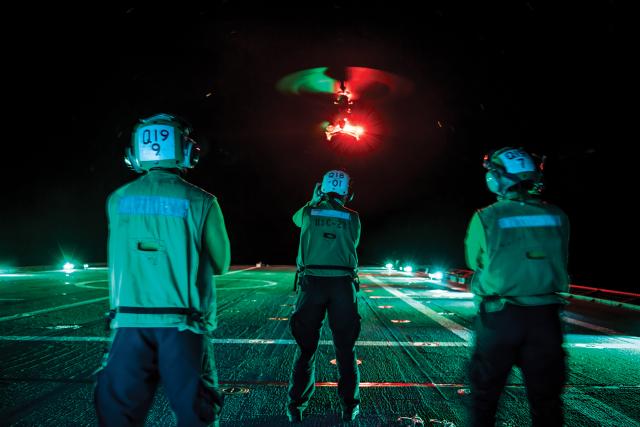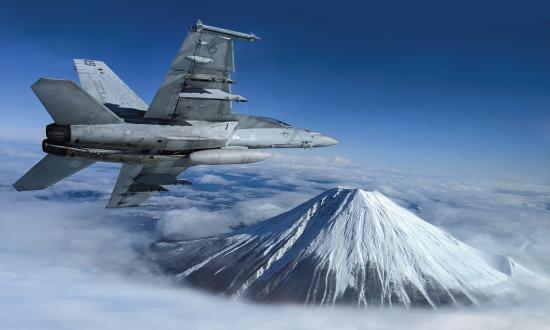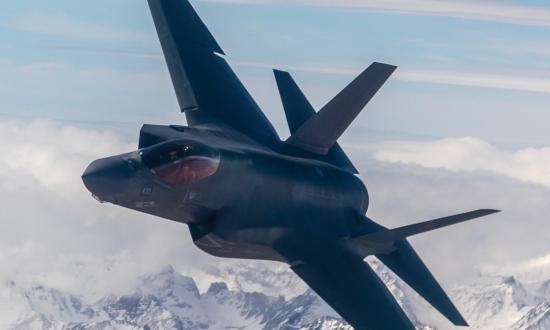The past few years have borne witness to significant headwinds for the Naval Aviation Enterprise: cost overruns, program shortfalls, leadership challenges, critical hypoxia and oxygen system issues, supply and maintenance shortages, and a budget largely subsumed by a few massive programs to the detriment of others.1,2,3
These issues led to a significant uptick in men and women departing naval aviation for greener pastures, an alarming trend resulting in a multiyear retention crisis. This trend only abated in 2020 for one significant reason: an uncertain job market during the COVID-19 pandemic.
It is a far cry from a decade ago, when Naval Aviation was successfully upgrading platforms across the fleet: F/A-18E/F Super Hornet fighters, EA-18G Growler electronic attack aircraft, P-8A Poseidon maritime patrol jets, E-2D Advanced Hawkeye early warning aircraft, and MH-60R/S Seahawk helicopters.
Today’s problem? Naval aviation lacks a cohesive strategy and the accompanying strategic narrative to go along with it. What will make matters worse is that budgetary headwinds are likely to become more challenging during the next few years.
Sure, each year brings incremental change to existing programs of record. But according to a multitude of currently serving Navy commanders, captains, and junior admirals—who would only speak off the record—the “shiny objects” currently being pursued are largely vaporware at this point. The ‘Airwing of the Future’ is essentially a loose concept without much to underpin it. The Next Generation Air Dominance aircraft concept remains just that—a concept facing significant hurdles to widespread adoption.
In many ways, today’s situation is reminiscent of the much-ballyhooed “Air-Sea Battle” period, when the public narrative far outran behind-the-scenes realities.
If naval aviation is to reposition successfully for the next few decades, senior leaders need to reassess the anticipated strategic environment and chart a clear path to remain relevant. Doing so is an imperative—not only to remain positioned to decisively fight and win our nation’s wars, but also to retain the talented men and women who seek an inspired career path.
There is an insatiable global demand for talent, especially from employers seeking to capitalize on the skills developed by aviators and maintenance experts serving in naval aviation. Naval aviation must craft a compelling strategy—and execute it—if it wants to: keep its best and brightest where they are needed most; advocate to a new defense secretary; and receive much-needed financial support from a wary Congress weighing a multitude of fiscal demands.
Aircraft Carriers
In 2020, the Department of the Navy’s leadership made clear one of their most pressing immediate objectives: to “put all hands on deck to make the Gerald R. Ford ready as a warship as soon as practically possible.”
A recent USNI News report detailed the Ford’s current combat systems ship qualification trials and preparation for shock trials. The synopsis is that the Navy—along with Newport News Shipbuilding contractors—is seeking to increase performance and reliability for a multitude of new systems.4
Launching and recovering aircraft remains a bright spot for the embattled carrier. In 2020, the Gerald R. Ford completed aircraft compatibility testing—launching and recovering hundreds of aircraft across several different platforms, including the T-45 Goshawk trainer, EA-18G, E-2D, C-2A Greyhound, and FA-18E/F variants. This critical testing enabled the Ford to provide carrier qualification support to student naval aviators in multiple pipelines. Flight deck certification was completed in March 2020. The carrier’s new electromagnetic aircraft launch system (EMALS) and advanced arresting gear (AAG) continue to make gains.
However, the advanced weapons elevators—designed to move up to 28,000 pounds of ordnance (twice the limit of Nimitz-class elevators) using electromagnetic propulsion—remain a particular concern. As of November 2019, the Navy had certified only 4 of the 11 elevators. By March 2021, the Navy had only brought 7 of 11 online, despite previous predictions to have all 11 done by April 2021.
The second Ford–class carrier under construction, the USS John F. Kennedy (CVN-79), was christened on 7 December 2019. Scheduled for delivery to the fleet in 2022, the Kennedy is undergoing a construction phase focused on habitability, assembly, mechanical assessments, and combat systems testing. Unlike the lead ship, which was fitted with the dual-band radar, all follow-on Ford–class carriers are scheduled to be furnished with a variant of the new AN/SPY-6(V) air- and missile-defense radar known as the Enterprise Air Surveillance Radar Suite. The Kennedy suffered a minor onboard fire on 20 July 2020. In November, Huntington Ingalls received a contract modification to ensure the aircraft carrier will have needed modifications to support the F-35 Joint Strike Fighter prior to its delivery.
The first four ships in the class are now accounted for, with the $15.2 billion multiship contract for the USS Enterprise (CVN-80) and USS Doris Miller (CVN-81) signed in January 2020. Construction on the Enterprise already has begun, and the Doris Miller’s keel laying is slated for 2026; the two aircraft carriers are slated for delivery in 2028 and 2032, respectively. Notably, CVN-81 is named for Mess Attendant Third Class Doris Miller, who distinguished himself with courage under fire on board the USS West Virginia (BB-48) during the attack on Pearl Harbor. This is the first aircraft carrier named in honor of an African American as well as for an enlisted sailor.
Strike/Fighter Aircraft
The Navy’s aviation fleet continues to take shape. Strike fighter aircraft continue to receive software updates to expand capabilities, while the first F-35 TOPGUN students graduated the course in June 2020.
F-35 Lightning II: The F-35B and F-35C provide stealthy all-weather air superiority and strike capabilities. In 2019, the Department of the Navy invested more than $450 million under the Continuous Capability Development and Delivery Program for Block 4 upgrades. The Navy’s first operational F-35C squadron, the Argonauts of Strike Fighter Squadron (VFA) 147, achieved initial operational capability (IOC) in February 2019.
In January 2021, the F-35 full-rate production decision was delayed until later this year to allow the Biden Administration an opportunity to assess current program capabilities and needs.
Navy F-35C and Marine Corps F-35B variants are expected to receive a Block IV update in the coming months. Described by Lockheed Martin as part of its “continuous capability development and delivery” process, the update will provide additional computing and processing power along with increased memory to support more advanced systems. Block 4 also is expected to incorporate support for AI-powered wingmen, such as the Air Force’s XQ-58A Valkyrie program.
F/A-18E/F Super Hornet: In June 2020, the Navy received its first Block III upgraded Super Hornets, which provided additional networking and survivability upgrades. Block III also brings an advanced cockpit system to the jet (one large touchscreen instead of multiple smaller displays), a lower radar cross section, and an extended 10,000-hour service life.
In addition, Boeing has agreed to convert all existing Block II Super Hornets to the latest Block III standards by the mid-2030s.
The Navy’s premier strike and air superiority fighter also sustained mission-capable rate milestones in 2020. For the past ten years, only 250 of the 550-aircraft Super Hornet fleet maintained a mission-capable status, making training and operations difficult. In response to then–Secretary of Defense James Mattis’s 2018 direction to increase frontline fighter squadron mission capability rates to 80 percent, the Navy modified its maintenance and supply chain models, allowing it to reach 341 mission-capable Super Hornets in September 2019. Naval aviation now sustains, on average, approximately 340 mission-capable Super Hornets at any given time.
One key to achieving acceptable levels of readiness was the creation of a maintenance operational center. Based at Naval Air Force Atlantic headquarters in Norfolk, Virginia, the center centralizes representatives from supply, engineering, fleet readiness centers, industry, and naval aviation. Members collaborate to make decisions regarding both long-range strategic planning for the entire fleet and individual jet maintenance issues, prioritizing in real time the parts and labor needed to maximize and sustain fleetwide mission-capable status. This model is working well for Super Hornets and Growlers, so naval aviation is scaling it up across other platforms.
Next Generation Air Dominance Aircraft (NGAD): Formerly FA-XX, the NGAD program is a family of systems designated as the follow-on to the Navy’s F/A-18 and EA-18G platforms. In April, the Navy concluded its long-awaited analysis of alternatives for designs. Its Fiscal Year 2021 budget request proposed reprogramming money originally intended to purchase 12 Super Hornets per year from 2022 to 2024 (ending 20-plus years of Super Hornet procurement in 2021) to accelerate the NGAD effort. The budget submission states, “The decision to cease F/A-18 procurement after FY 2021 ensures the Carrier Air Wing will maintain capable strike fighter capacity to pace the most stressing threats through the 2030s.” Combining Super Hornet savings with additional research funding, the Navy plans to invest an estimated $4.5 billion between 2021 and 2025 to speed “development of [NGAD] and other key aviation wholeness investments.”
Electronic Attack
EA-18G Growler: An offshoot of the successful F/A-18F Super Hornet airframe, the Growler is optimized to conduct kinetic and non-kinetic operations in the electromagnetic spectrum. In March 2020, the Navy received its last three Growlers, bringing total inventory to about 60.
In March 2021, Boeing received the first Navy EA-18Gs for modification at Naval Air Station Whidbey Island, Washington. The modifications are focused on updating the jets’ structural and mission systems architecture, enabling future capability growth. Full rate modification is expected to start in June 2021 and last for five years.
As part of Navy Warfare Development Command’s annual fleet experiment exercises held in September 2019, a joint Navy-Boeing team modified two Growlers to act as unmanned surrogates while being controlled by a third manned Growler. (Takeoffs and landings were performed by in-cockpit aircrew.) Exploring autonomous flight opportunities will extend an aircraft carrier’s missions and provide additional choices when flying into highly contested airspace.
Early Warning
E-2D Advanced Hawkeye: In August 2020, the Navy signed a $34 million contract with Northrop Grumman to develop the E-2D Hawkeye Cockpit Technical Refresh (HECTR). A critical hardware and software redesign, HECTR will bring modern cockpit capabilities to the E-2D, after primarily focusing on radar and weapon system updates during past decades.
With its AN/APY-9 active electronically scanned, mechanically rotated radar, the E-2D is the centerpiece of the naval integrated fire control concept. This capability was enhanced in 2019 with the initiation of the fleetwide upgrade to Delta Software System Configuration 3. While specifics remain classified, this software processes data for analysis and display to assist radar operators in mission execution. In addition, select E-2D squadrons began inflight refueling training this past year. Reflecting the steep growth in capability in the new variant, Hawkeye squadrons were rebranded from carrier airborne early-warning squadrons to airborne command-and-control squadrons (the VAW acronym used since the 1950s, however, will be retained as squadron designator).
Rotary-Wing Aircraft
MH-60R helicopters are the only organic antisubmarine warfare assets in carrier air wings today. The Navy took delivery of its final MH-60Rs last year.
MH-60R/S Seahawk: Both variants deploy with carrier air wings and expeditionary detachments ashore, as well as on board cruisers, destroyers, L-class amphibious assault ships, littoral combat ships, and Military Sealift Command ships.
MH-60S tasking includes vertical replenishment logistics, antisurface strike, search and rescue, airborne mine countermeasures, and naval special warfare support. Introduced in 2002, 275 MH-60S were manufactured for the Navy; production ceased in 2016. The MH-60 is equipped with a combination of specialized avionics and weapons, including the multispectral targeting system, airborne laser mine-detection system, airborne mine-neutralization system, AGM-114 Hellfire missiles, Advanced Precision Kill Weapons System, 20-mm cannon, and crew-served weapons.
The MH-60R supports antisurface, antisubmarine, and electromagnetic warfare missions. As the only organic antisubmarine platform in the carrier air wing, the MH-60R is outfitted with the APS-153 radar, AQS-22 low-frequency dipping sonar, multispectral targeting system, tactical common data link, sonobuoys, and Mk-46/54 lightweight torpedoes. Ongoing capability upgrades include the purchase of automatic radar periscope detection and discrimination retrofit kits for the APS-153 radar and advanced data transfer system kits (common to the MH-60S), which incorporate an in-cockpit moving map and digital data recorder. With more than 290 aircraft in the Navy’s inventory, MH-60R deliveries were completed in 2020.
MH-53/CH-53: Both variants are descendants of the original 1960s designed Sikorsky S-65 heavy-lift helicopter and have a maximum range (cargo load dependent) of more than 1,000 nautical miles. The Marine Corps’ CH-53E Super Stallion is the service’s only combat heavy-lift rotary-wing platform and deploys extensively with embarked Marine air-ground task forces on board the Navy’s L-class amphibious ships.
Designed to carry up to 32,000 pounds of cargo externally and a maximum gross weight of 73,500 pounds, the aircraft can be configured to accommodate 32 Marines and is capable of inflight refueling. The aircraft can be armed with up to three GAU-21 .50-caliber weapon systems and is equipped with a full suite of countermeasures. The internally transported tactical bulk fuel delivery system provides long-range capability and enables the aircraft to serve as a rapid ground refueling platform for other aircraft and ground vehicles. This legacy platform is planned to remain in service through 2030.
The CH-53K is currently in development as the Marine Corps’ planned successor. The service received its first simulator at Marine Corps Air Station New River on 1 May 2020.
The MH-53 Sea Dragon is the Navy’s only heavy-lift rotary-wing asset for internal and external vertical onboard delivery. It can carry up to 55 troops or 32,000 pounds of cargo. Unlike its Marine Corps cousin, however, the Navy variant deploys primarily to shore locations, flying required logistics runs to and from L-class ships and aircraft carriers. Notably, the Sea Dragon is also the Navy’s most versatile mine-sweeping platform, capable of using sonar and magnetic mine-sweeping sets (Mk 103, 104, and 105), the ASQ-24B mine detector, and the AN/ASQ-232A mine-neutralization system. With an aging fleet of 29 MH-53Es, the Navy has devoted considerable effort to improving the safety and reliability of this platform until its planned sundown in 2025. Without a direct replacement named, many of the Sea Dragon’s missions will be assumed by existing platforms.
Maritime Patrol and Reconnaissance
P-8A Poseidon: The P-8A is the Navy’s long-range maritime patrol follow-on to the P-3C Orion. Although the aircraft is designed primarily as an antisubmarine warfare platform, in 2020 the P-8A program office (PMA-290) solicited industry bids for integration of additional weapons, advancing the platform beyond the sub-hunting domain. Notable weapons included in the request were the AGM-158C long-range antiship missile, the joint direct attack weapon, the Quickstrike family of mines, and the maritime air-launched decoy. P-8s deploy to land-based locations, and two forward operating base stalwarts of the Cold War—Naval Air Station (NAS) Keflavik, Iceland, and NAS Adak, Alaska—are receiving renewed interest from the Navy’s maritime patrol community. In 2019, the Navy began looking into using Adak for future P-8 deployment sites; Keflavik has been a regular deployment site for P-8s since 2018. The Navy has a total P-8 force requirement for 138 aircraft, but budgetary pressures have limited procurement plans to 117.
Tiltrotor Aircraft
CMV-22B: The CMV-22B—the Navy version of the V-22 Osprey—is in the process of replacing the C-2A Greyhound as the carrier onboard delivery (COD) platform. Retaining its vertical takeoff-and-landing tiltrotor capabilities, this medium-lift platform has greater operational range, faster cargo loading/unloading, increased survivability, and enhanced beyond-line-of-sight communications compared with the C-2A. In October, the CMV-22 community took a significant step forward when it established the Fleet Logistics Multi-Mission Wing, the type wing responsible for manning, training, and equipping the fleet logistics multi-mission squadrons.
Last year marked many firsts: The VRM-30 Titans, home based at NAS North Island, accepted the first operational CMV-22B in summer 2020 and achieved safe-to-operate certification. The CMV-22 is scheduled to achieve IOC this year and to be fully operational in 2023. The Navy’s plan calls for a total of 48 aircraft.
Unmanned Aerial Vehicles
MQ-4C Triton: Designed as a persistent intelligence, surveillance, and reconnaissance unmanned aircraft to complement the P-8A fleet, the MQ-4C is outfitted with the AN/ZPY-3 multifunction active sensor and incorporates a 360-degree active electronically scanned array radar optimized for maritime surveillance. In February 2020, VUP-19 (the Navy’s sole UAS-only squadron) deployed two MQ-4Cs to Andersen Air Force Base in Guam, marking the first Triton deployment to the Indo-Pacific AOR. Although not scheduled to reach initial operating capability until 2023, the MQ-4C Triton unmanned aircraft system conducted some early operational capability testing to develop concepts of operations and expose the fleet to operating a high-altitude, long-endurance system in the maritime domain.
MQ-8C Fire Scout: Northrop Grumman’s MQ-8C is based on the Bell 407 helicopter design and delivers twice the endurance and three times the payload capacity of the MQ-8B. In July, the Navy declared the MQ-8C IOC and ready-to-operate from the littoral combat ships (LCSs). The IOC certification came after the Navy earlier refined the mission of the MQ-8C from a frontline swarm-attack defense system to an airborne sensor suite focused on enabling over-the-horizon targeting for LCSs. A fleet of 38 MQ-8Cs is planned to complement the Navy’s current fleet of 30 MQ-8Bs.
MQ-25A Stingray: Designed as an unmanned airborne refueling tanker capable of providing up to 15,000 pounds of fuel, the first Stingray prototype made its maiden test flight on 19 September. Under Boeing test pilot control, the aircraft completed a taxi, takeoff, and two-hour flight, validating the aircraft’s basic connectivity and interactions with its ground control station. In early April 2020, according to USNI News, the Navy exercised contract options with Boeing valued at $84.7 million to buy three MQ-25A Stingrays. The three aircraft covered by the contract options are to be completed by August 2024, and IOC should be by the end of that year. The Navy plans to procure a total of 72 total Stingrays.
Weapons and Avionics
AGM-158C Long Range Anti-Surface Missile (LRASM): A derivative of the Joint Air-to-Surface Standoff Missile–Extended Range program, the LRASM is a long-range, precision-guided missile designed to use multiple sensors to target enemy warships operating within an antiaccess/area-denial environment. The missile achieved early operational capability (EOC) first in the U.S. Air Force on board the B-1B Lancer in March 2018. For the Navy, EOC was achieved in November 2019, when it was successfully carried on board an F/A-18 Super Hornet. Current inventory is approximately 100 missiles, and the procurement goal is 210 by 2025.
AN/ALQ-247 Next Generation Jammer (NGJ): The NGJ is the follow-on for the AN/ALQ-99 Tactical Jamming System. Designed as an external pod system, the NGJ employs multiple active electronically scanned arrays and an advanced deception techniques generator, bringing advanced electronic warfare capabilities to the battlespace. In August 2019, the Navy received from Raytheon the first NGJ mid-band pod, and in November the Navy announced a $403 million contract modification with Raytheon for seven additional mid-band pods and associated support equipment. IOC for the mid-band pod is planned for fourth quarter 2022.
In December 2020, the Navy awarded L3Harris Technologies $496 million to deliver eight prototype NGJ-low band jamming pods. Together, the mid-band and low-band pods form two of the three required ‘shipset’ capabilities, with all three a combination of capabilities needed to replace the aging AN/ALQ-99 jamming system. IOC for the low-band pods range from fourth quarter 2022 to fiscal year 2024.
Infrared Search and Track (IRST) Block II: IRST is a passive, long-range sensor incorporating infrared and other sensor technologies for highly accurate targeting. The IRST sensor is housed in the front portion of an FPU-13 drop tank designed to be carried on the centerline of the Super Hornet. To accommodate the IRST, the FPU-13 will carry only 330 gallons of fuel—a standard centerline drop tank holds 480 gallons.
Currently in the risk-reduction phase of development, the Block II IRST flew on board an F/A-18 Super Hornet for the first time in late 2019. IRST is expected to be delivered to the Navy in 2021, with IOC occurring soon after.
1. Megan Eckstein, “Top Stories: U.S. Navy Acquisition,” USNI News, 25 December 2020.
2. Eric Tegler, “Hypoxia Threatens Navy and Air Force Pilots, and the Threat is Growing,” Popular Mechanics, 25 June 2017.
3. Statement by John Pendleton, Director, Defense Capabilities and Management, before the Senate Subcommittees on Readiness and Management Support, 12 December 2018.
4. Megan Eckstein, “As USS Gerald R. Ford Nears Shock Trials, Carrier Remains Busy with Testing, Fleet Support,” USNI News, 12 March 2021.



